Galápagos, Part 1
12th - 19th Feb 2025
Isla Santa Cruz
Isla Baltra
After 3 consecutive flights from Panana City, we felt a wave of relief finally touching down in Isla Baltra. The small barren island sits just off the northern tip of Santa Cruz and was formerly home to a US Airforce base responsible for early warning and defense of the strategically important Panama Canal during WW2. With prevailing winds and moist airs coming from the south, the northern ends of the islands are particularly dry and arid as the rains fall on the southern volcanic slopes. Before even making it to baggage reclaim we were welcomed by a large vibrant prehistoric looking Galápagos land iguana, chowing on the fauna that could survive in the extreme heat this close the equator and with so little rainfall.
After paying a chunky National Park entrance fee of $200 in cash, we board a bus south to the channel that separates Baltra from the far larger Santa Cruz. With our bags casually tossed onto the roof of a small ferry, we're soon across the azure blue waters which ignite our desire to scuba dive again. Having departed Panama City at about 2am, and the night prior being the full day Panama Canal transit, I have not slept more than a few hours in the last 48. But we had one more test before we could rest. About to get into one Hilux taxi, we are suddenly told we must get in a different one by a local also heading to town, barely before we could get seat belts on, the driver, seemingly fueled by a silent rage is accelerating to more than 130kph, the road with a limit of 70kph thankfully could take it but this lunatic insisted on tailgating every vehicle he caught up and sitting on their bumper, until violently swerving around and ragging the throttle until the next one. Our nerves already shot, and simply exhausted we're sliding to a stop in what felt like a very remote featureless landscape.
Trading looks of confusion, we're hastily told to get out of the back seats into the rain that has begun to fall. Thankfully the reason for this interlude from the roller coaster ride was is simply to pull out a canvas to cover the open back of the pickup which contained all of our bags. Somewhat reluctantly getting back in, we’re soon closing in on twice the speed limit again and hurtle through new interesting landscapes which become more lush and green as we enter the highlands then start to descend south to the main town Puerto Auyora. Our first night's accomodation was in the White House hostel, and just to top the travel exhaustion off, Ben opens his waterproof duffel to the strong aroma of Rum. A bottle gifted by the owners of Moana Nui for their help through the Panama Canal had smashed, soaking many of the contents. Atleast we weren't upside down in a ditch!
Tortuga Bay
To the west of Puerto Auyora, Santa Cruz's main town, lies the white sandy Tortuga Bay. A hot hike down a trail through a lava fieldlandscape of cacti, we emerge to a welcome sea breeze and our first encounter with Marine Iguanas. In stark contrast they prehistoric looking reptiles walk straight towards us, as if they were asking for their photo to be taken. Perched on a rocky outcrop two iguanas share a hug watching the world move past. Crossing the beach past juvenile sharks chasing fish in the shallows, brown pelicans flop out the sky and scoop up their catch. My eye catches another endemic species of Galápagos hunting. The small black Lava Heron preys on young crabs and crustaceans with its black feathers helping to blend into it's surroundings. The adjoining bay is a tourist haunt, but from a vantage point on the headland I see my first hammerhead shark, only a few feet long and being pursued in a playful manner by an equally small black tip. Returning to our AirBnB we soon discover the ferocity of the UV in Galápagos this close to the equator, despite our time in the Caribbean tropics, this is next level and we're all in need of a liberal application of aftersun!
Galapagos Giant Tortoises
Flagging down another one of the white Hilux taxis that dominate the island’s share of cars, we agree a fare to take us to the highlands of Santa Cruz to visit one of the Galápagos most famous inhabitants and delve inside the volcanic landscape. Rancho Primicias is an area the Giant Galápagos Tortoises thrive, with land partially cleared for cattle, these behemoths find grazing far easier than navigating trees, uneven terrain and undergrowth.
Only moving a kilometre or so a day, their largely sedentary lives can lead to extraordinary life spans of close to 200 years. Growing to in excess of 300 kgs it's no surprise they can be found resting on their shells for most of the day and being “really very lazy” in the words of our professional guide. Certainly not the most challenging wildlife photography subject I've contended with! Our guide enthusiastically told of the differences in the species between the various islands and how their evolution had tailored them to suit the food sources available. For example the saddle back giant tortoises evolved to have raised shells and an recess that allowed their long necks to reach up to cacti on the more arid younger islands, whereas the domed tortoises found on the older islands with more fertile soils did not evolve this way. Similarly he told of the variations in the 4 species of Galápagos iguanas; Marine, Pale Land, Yellow Land and Pink. The Pink is the most illusive and challenging of all, native only to the upper slopes of Wolf Volcano to the north of Isla Isabela. Typically only accessed for scientific research projects via helicopter, our guide was hopeful his application to become an assistant on one such expedition would be granted in the next few days. On his passion and enthusiasm alone, I sincerely hope his dream came true!
Lava Tunnels
Refueled with empanadas our taxi driver took us back along a rutted track to the entrance of the Lava Tunnel. In spanglish we understood he would potentially pick us up the other side, and we decended in into the welcome shade of the tunnel. Formed by rivers of molten magma which had drained leaving the tunnel, the passage was several stories high and save for one shorter section where the ceiling reduced to just a few feet high, it would have comfortable accomodated a bus driving through.
Charles Darwin Centre & Puerto Auyora
Just a 10 minute walk from the centre of town lies the Charles Darwin Research Station and Tortoise Breeding Centre. Here Giant tortoises of the Saddleback species are in captivity and bred in a effort to restore number which were decimated by human hunting in the 18th and 19th centuries. In Ben's words “tasty and slow” really was a terrible combination. Here arguably one of the the most iconic symbols of conservation remains on display. Lonesome George passed in 2012, and after being transferred to the USA for taxidermy, returned to Galápagos in a climate controlled enclosure. The very last of his particular kind, efforts to breed Lonesome George had sadly failed, and he lived until he was over 100 years.
Isla Pinzon
To visit one of the smaller islands, we'd booked a boat day trip to Isla Pinzon which had rave reviews about the snorkeling on offer. Enroute we stopped at Le Fe bay on the west coast of Santa Cruz, a shallow bay with many large turtles grazing on the algae along with marine iguanas. Snorkeling through shallow channels we land on a sandy beach and a warned of the pesky horseflies that plague the islands and particularly like the taste of salty humans.
Walking through the mangroves we emerge on to black volcanic rocks, with only cactus thriving. Our guide tells of the two species that thrive in Galápagos, Candelebra and Opuntia. Heading out onto the headland, Magnificent Frigate Birds (their full name, not just in behaviour) soar above us and Blue-footed boobys sun themselves on the rocks between hundreds of vibrant orange Sally Light Foot crabs. The closer you looked the more wildlife revealed itself with the black marine iguanas blending into the volcanic landscape.
Below us two sealions gracefully swoop through a crystal blue tidal pool periodically surfacing to bark or “arf arf” at other. Returning to the waters edge we snorkel back to the boat interrupted only by the inquisitive sealions and to stop and watch the white tipped sharks and curious pufferfish that frequent the bay. Back on the boat I climb up to the flybridge with the skipper and we leave the back bound for No Name Rock. This towering volcanic rock is another popular haunt of sea lions and Nazca and Blue-footed Boobys.
The sheer abundance marine life enroute to Pinzon is staggering with the skipper regularly making evasive maneuvers to avoid hundreds of turtles floating at the surface. We see the fins of hammerheads sharks and shoals of yellow fin tuna chasing bait balls that also draw in flocks of seabirds.
Approaching Pinzon, we see the seabed, colourful reef fish, and sharks circling deep below us through crystal clear water and a quick to jump in. Here a boulder wall descends steeply beyond 20 metres, perfect for freediving down to a interesting mix of corals and sea life. The water is cooler than the Caribbean water we were used to, with a mix of currents creating thermoclines that could be sharply felt as you descended. Further on we swim into a sandy bay and are spoilt with eagle rays and sharks cruising around us, unperturbed by our presence. Swimming inside an inlet, we meet a family of sea lions. Two large bulls are scrapping whilst a mother and juvenile zoom around us in touching distance blowing bubbles.
Las Grietas, Santa Cruz
A dollar water taxing ride away from the town, took us to a trail leading to La Grietas. A creation of the volcanic landscape this largely fresh water flooded gulley was about 7m deep with a high tide connection to the sea allowing some species of fish to thrive. Large shoals of yellow tail mullet cruised the gulley and eels snaked between the boulders.
Isla Isabela
Packing our bags again and shutting the door on another AirBnB, it was time to catch a ferry ride to Isabela to the west. With bags sent through a scanner at the port monitoring for potential environmental contaminants, we shuffle into the crowds between snoozing sea lions who could not give a damn about the commotion of everyone trying to find their respective water taxis to the ferries moored in the bay. Isabela is vast, created by a chain of 4 volcanoes and just so happens to be shaped like a the seahorses that can be found in the surroundings waters.
Wall of Tears Hike
Despite advice to hire push bikes, we set out on foot to hike to the Wall of Tears. Along the prestine white sands of Peurto Villamil beach, Marine iguanas and the slightly comical Painted Ghost Crabs scuttling by are our only company.
As the beach ends, we return to the trail past the local graveyard filled with colourful and well colourful decorated tombs. The trail enters an arid land of cacti and Giant Tortoises who lounge in the shade or shallow water pools. One particularly large tortoise lay at the edge of the trail and showed no desire to move and time soon. Arriving at the towering drystone Wall of Tears, one instantly imagines the brutality of the forced labour involved. We continue the hike to Radar point hilltop an early warning WW2 installation, and drink in the view of the surrounding islands and enjoy breeze.
Islote Las Tintoras, Penguins!
You may already may know that when Ben, Alex and committed to quitting jobs and securing sabbaticals in 2024, we were committing to sail south, very south for a sailing expedition to Antarctica. You may also have gathered that hadn't quite materialized if you have been following our adventures through Latin America over the last 6 months.
So now we found ourselves in Galápagos, and we weren't going to skip the opportunity to see a species we were expecting to see on the Antarctic Peninsula, penguins! Smaller than their Southern cousins, Galápagos penguins can be found in the western islands, and looking to get up close, we had hired kayaks to explore the Tintorosas islets. Barely leaving the beach we saw our first penguin, looking slightly scruffy midway through molting feathers. Before long sea lions are checking us out as we weave through the rocky islet. I'm in a tandem kayak with our local guide who happily sings to himself between providing snippets of wildlife knowledge. He explains how the expense of living in Galápagos will regrettably likely force him to head to mainland Ecuador like the rest of family in pursuit of a better salary and more affordable accommodation and basic commodities. The parallels with Guernsey are uncanny. Alongside booby's and marine iguanas, three more penguins sun themselves on the lava rocks. One nestles down on their flippers to protect them from the extreme UV and sunburn. Thanks Sir Attenborough for that fun fact!
Volcan Sierra Negra
We could not skip the opportunity to get closer to the heart of Isabela, and had booked a guided tour to enter the second largest Caldera on earth, the Sierra Negra. It is second only to the Yellowstone shield volcano. We’re picked up from our accommodation in a lorry, adapted to carry open sided benches on the load bed. Picking up just two other hikers in town, we begin the long accent to the volcanoes edge. There is definitely a likeness to riding the ‘toast rack’ trailer up harbour hill in Sark if you've ever had the pleasure! The landscape changes as we ascend, becoming more lush with greenery before changing again to shorter more hardy plants that have survived the extremes of the changeable weather at this elevation. The view is initially limited by the clouds we have ascended into, but it is not long before these clear and the rolling view to our left down over the island fans out and staggering size of the caldera to our right can start to be seen! Over the next 2 hours with our friendly and knowledgeable guide we hike to the sulfurous vents inside the caldera via a landscape that feels truely primal and out of this world! The sulfur clouds soon chokes at the back of your throat, and has scarred the lava rock yellow in a surreal contrast to its surroundings.
Next we take a pitstop back in Santa Cruz for scuba diving with hammerheads, and exploring Isla San Cristobal with some of the best diving of our lives!


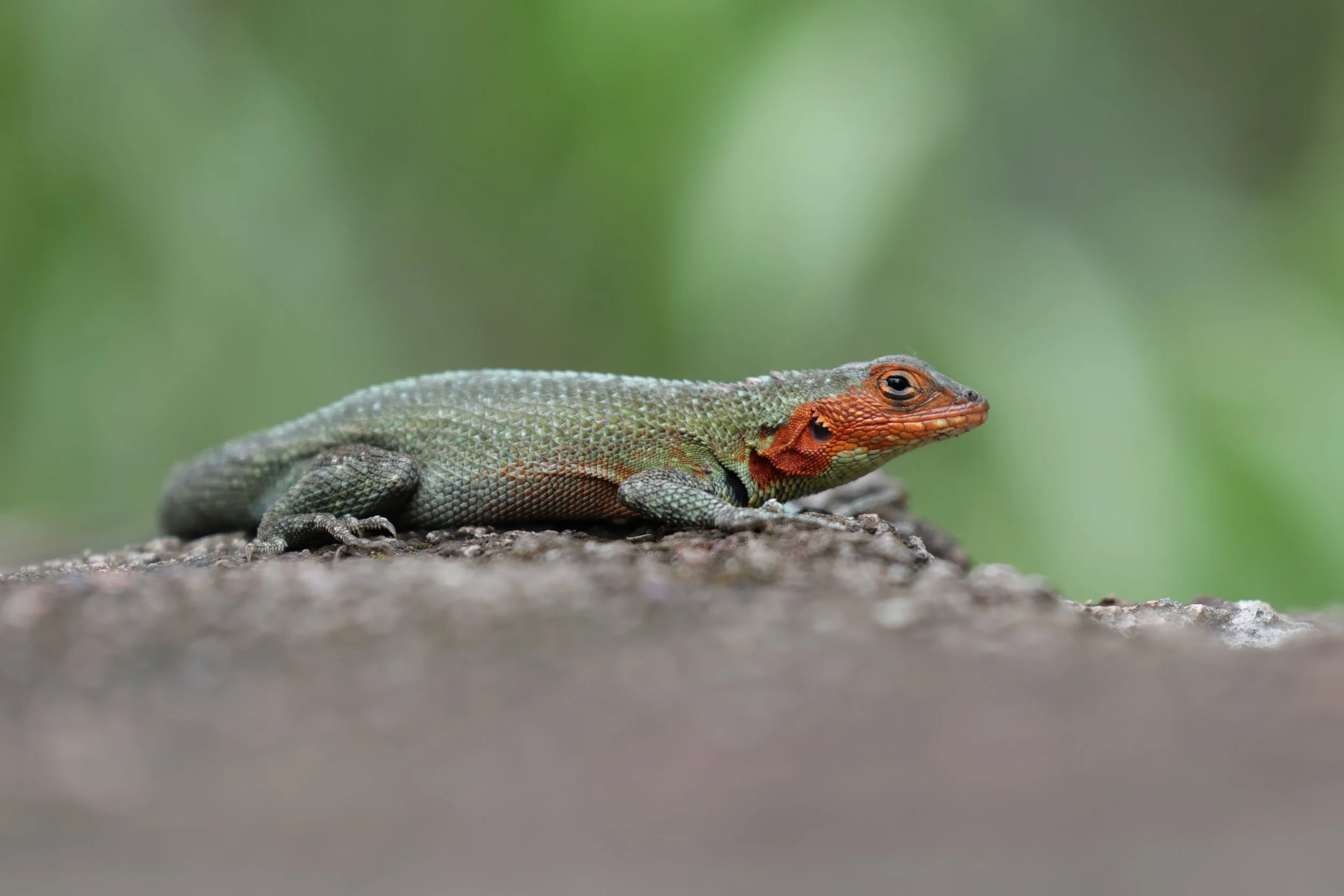


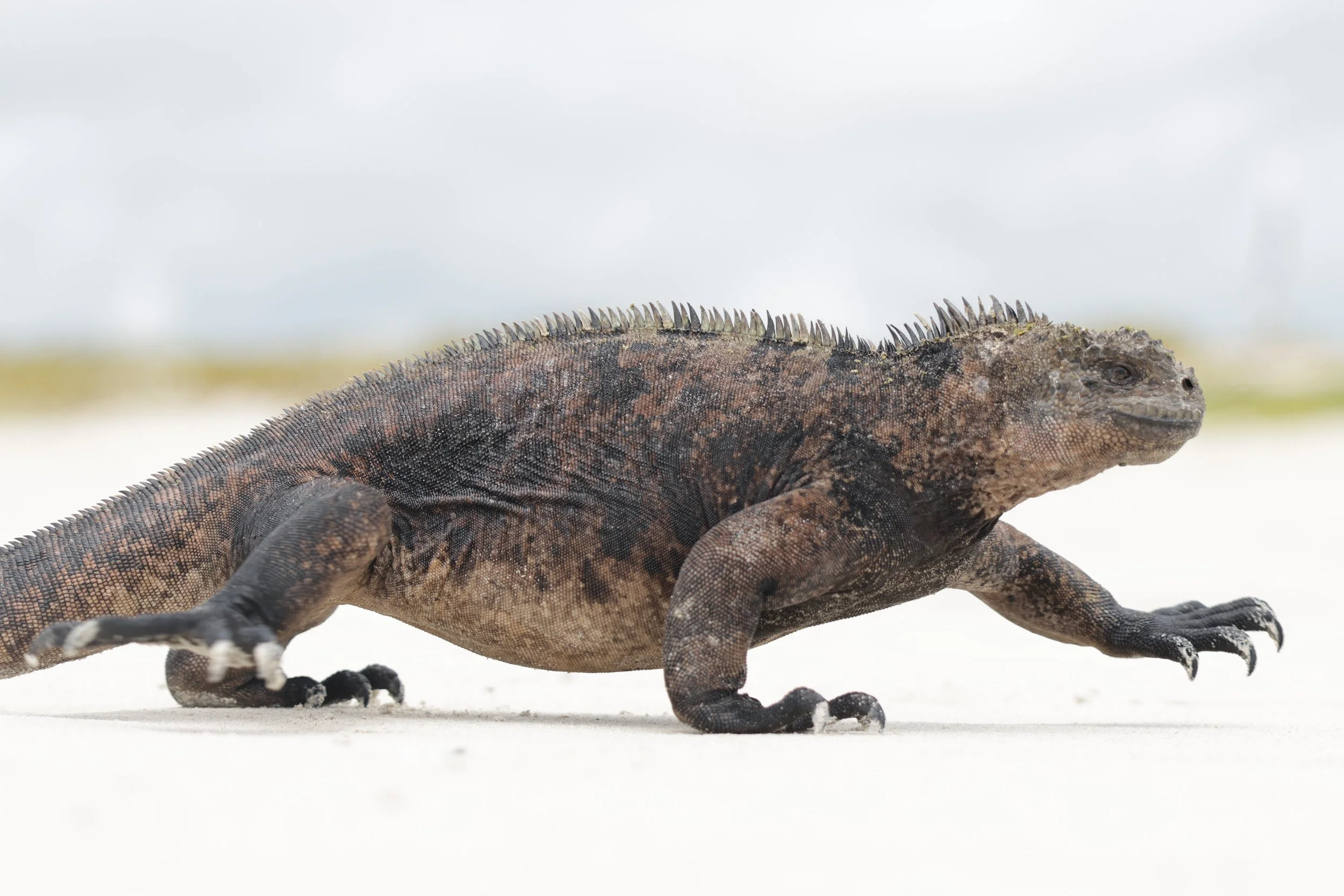













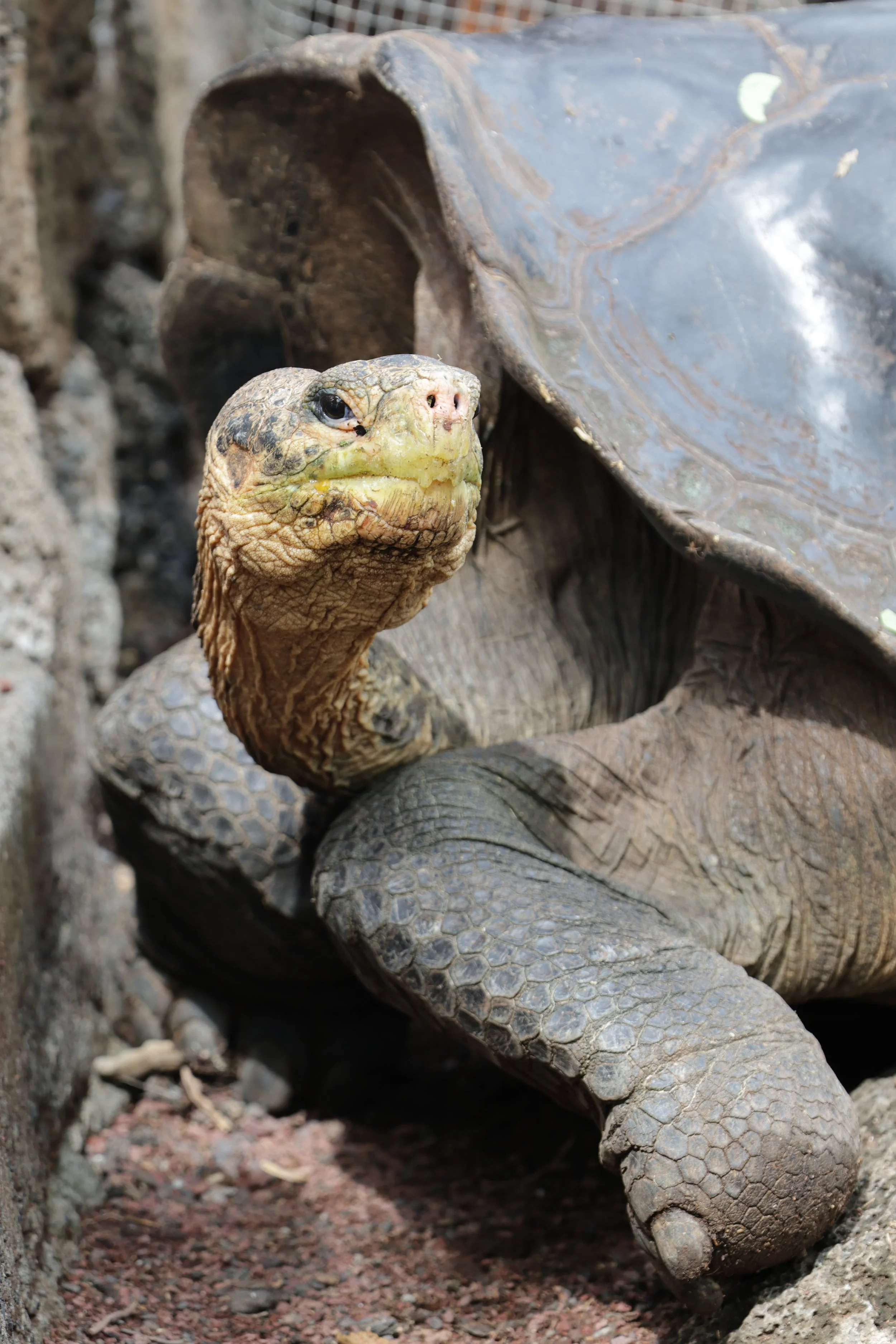












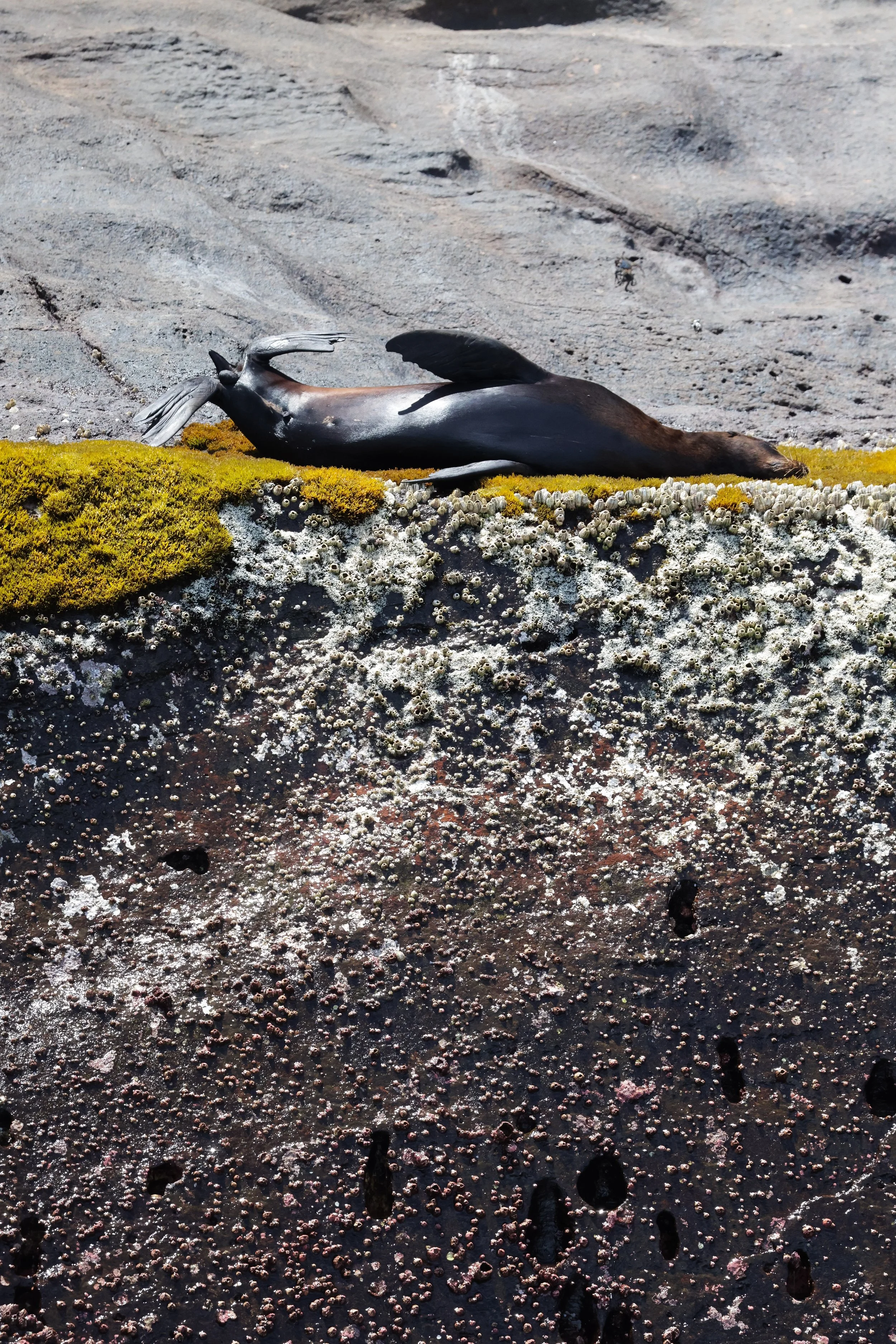















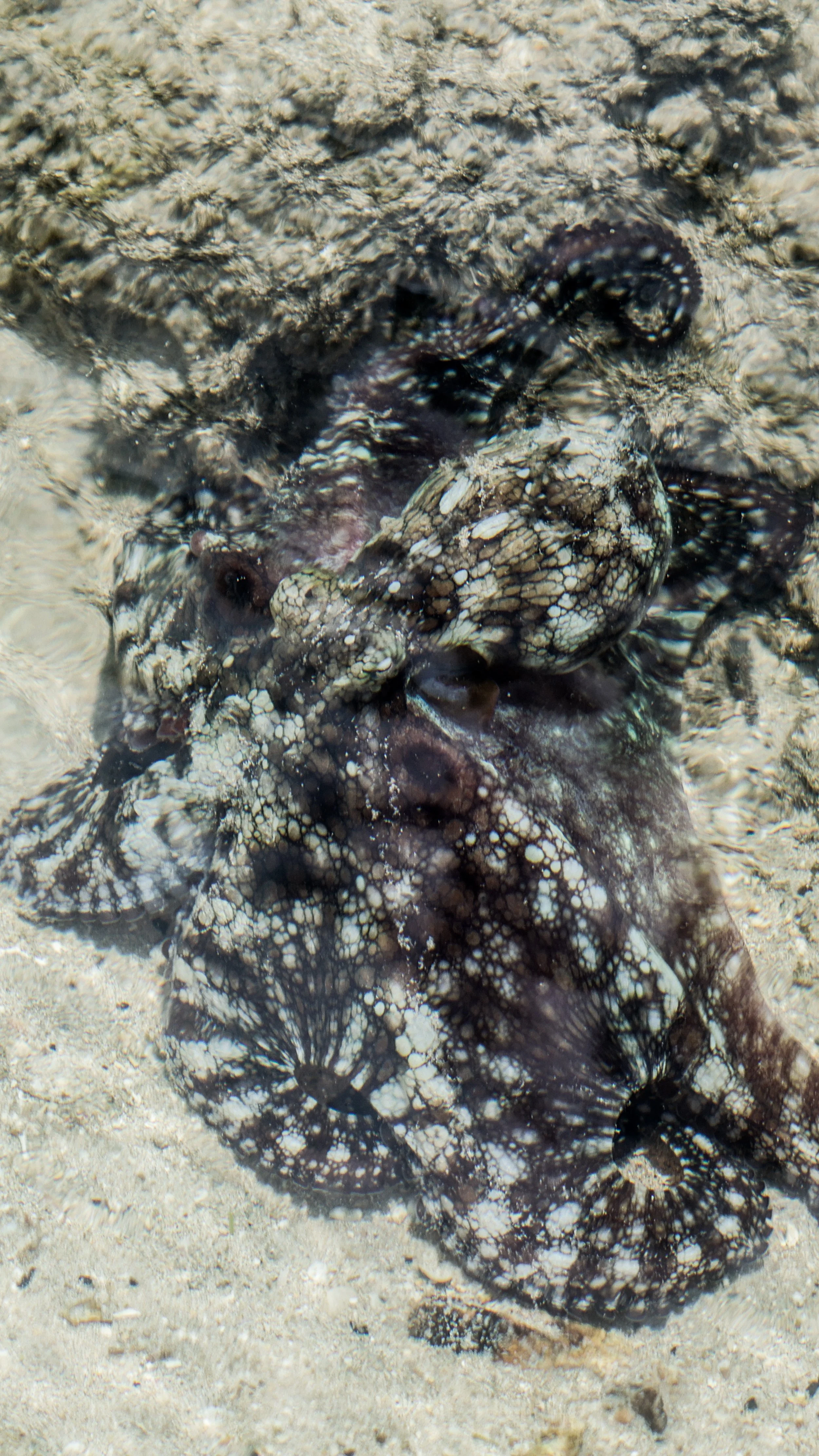












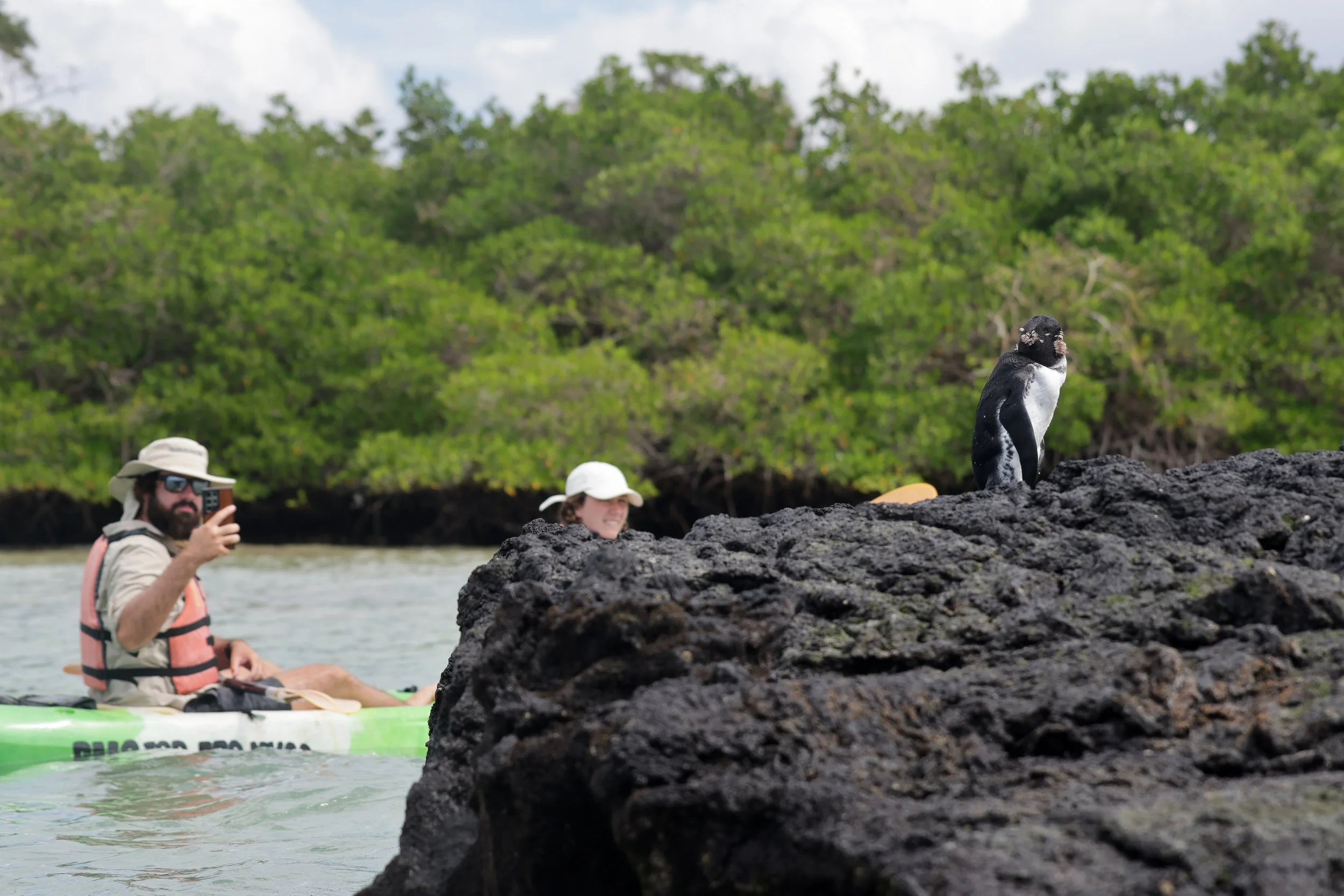

















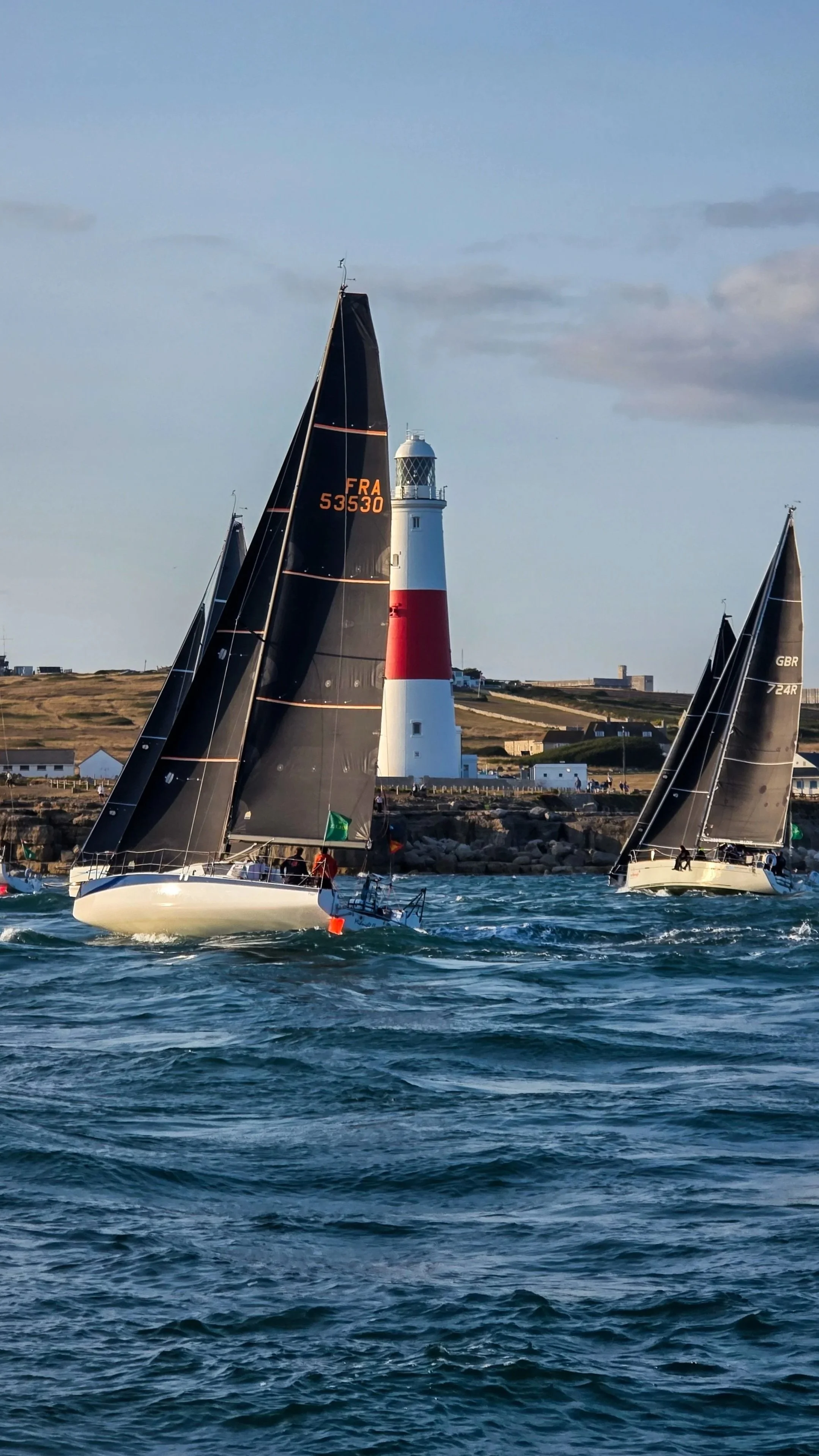




























A unexpected call to the Mediterranean.